QuestionChris,
I'm planning on moving my Cichlid(1) into a larger tank. I've read and heard many opinions on the proper way this should be done. I've read your answers to other questions and you seem to be the man who knows his work! I'm simply looking for the safest and efficient way to perform this fuction from start to finish. The new tank will have new gravel.
Much Appreesh!
AnswerHi Bill;
Moving a larger fish isn't that much different than moving smaller ones. Just be careful to have everything ready and at hand. An extra pair of hands from a friend is a good idea too. I'm not sure what part you need help on, so I will do what I can to answer what I think you need. Besides, this is my last question of the day and it's snowing outside. Again. Not much else to do at the moment!
The process to move a fish with the least stress can take 5 to 7 days. Take your time and don't rush. For this reason you really should have both tanks set up at the same time to prepare and transition both the fish and new tank. It is very stressful on your fish and risky to break down the old tank and have him wait in a bucket while you set up the new one. You need to have the new tank running for a day or more to be sure the heater is keeping the temperature stable, that the filter works, and that the tank and filter don't leak. You will also want to make a daily water change in the old tank where your fish is still residing in order to prepare your fish for so much fresh new water in the new tank. Do a 25% water change every day for at least 4 days before trying to move him. It will make it a MUCH easier transition for him and reduce stress and shock.
Once your new tank is ready, add water some conditioner. Next you will want to "seed" the new gravel in the new tank with bacteria from your old gravel. This will greatly reduce the length and severity of "New Tank Syndrome" toxins after you put him in there. First you will need a "bag" to hold some of the old gravel from your old tank. Get an old nylon stocking and cut off several inches of one of the feet. Use both feet if it's a tank of 50 gallons or larger. If you don't have those in your house, but a pair of Knee-High nylons. Rinse the stocking well and fill each one with gravel from your old tank and tie a knot in the top. Don't rinse the gravel or anything. The fish poo in there is actually helpful because it will feed the bacteria that is clinging to the gravel and being moved to the clean new system.
Once your fish has had a few water changes, the tank is ready with it's bags of gravel, you can then add your fish. I don't know how big he is or what type of cichlid, but plastic bags can be used with even some pretty big ones. (If he is too big for your plastic bags, skip to the next paragraph.) Get a plastic bag, doubled or tripled if the bag is thin, and fill it with old tank water. Place it in the new tank and close the bag up, leaving a big air bubble in the top. It's okay if he pokes the bag with his spines at the ends of his fins. It happens with big guys. Just keep checking to be sure there is still air in the top. Let it float there for about 20 minutes, then open the bag, add some tank water (a cup or two) and reseal, remembering to leave an air gap again. Let him continue to float there for another 20 minutes, adding some tank water every 5 minutes. This procedure will acclimate for temperature as well as for water chemistry, also giving him oxygen from the added water. Once he has been floating there for a total of about 40 minutes, pull the bag from the tank. You don't want that nasty old water in your new tank if you can avoid it so you will be removing him from the bag and releasing him into the tank without it. The bag water has ammonia, stress-hormones, etc. in it that you don't need in your new tank. Just throw it away.
If you don't have bags big enough to hold him, just put him in a bucket with old tank water. Fill it just enough that it covers his dorsal fin as he sits on the bottom. If you give him too much water he could jump out too easily or he could move too much and injure himself. Over the next 40 minutes to an hour you will be adding new tank water to his bucket. Put a lid of some kind on it between additions so he can't jump out. Just pour it in gently every five minutes or so. You will need a thermometer to measure the water temperature of both the bucket and new tank to make sure it is the same before you catch him and release him to the new one. You can add some slightly warmer conditioned tap water a few times (poured very slowly) if the bucket water is cooling off too much. Do this until it is the same temperature as the new tank. Once it is, put him in the new tank without the bucket water. It has ammonia, stress-hormones, etc., in it that you don't want in your new tank.
If I didn't give you what you were looking for, let me know and we'll give it another shot.
At Your Service;
Christine Robbins ;-)

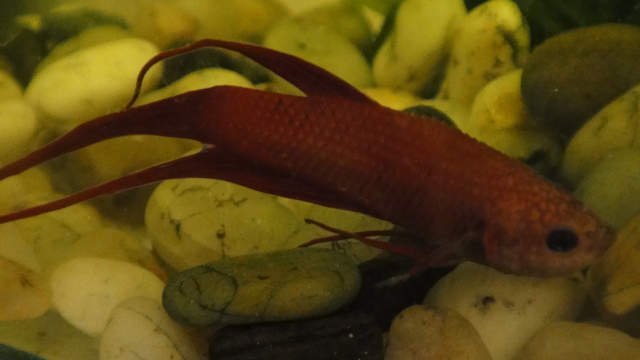 sick fighter
Question
fighting fish
Hi I brought fighter today and m
sick fighter
Question
fighting fish
Hi I brought fighter today and m
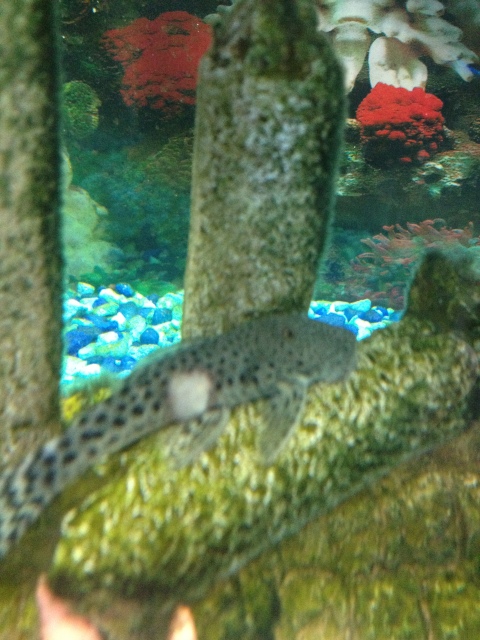 Rubber lip pleco
Question
pleco spot
i have a 10 gallon set up wi
Rubber lip pleco
Question
pleco spot
i have a 10 gallon set up wi
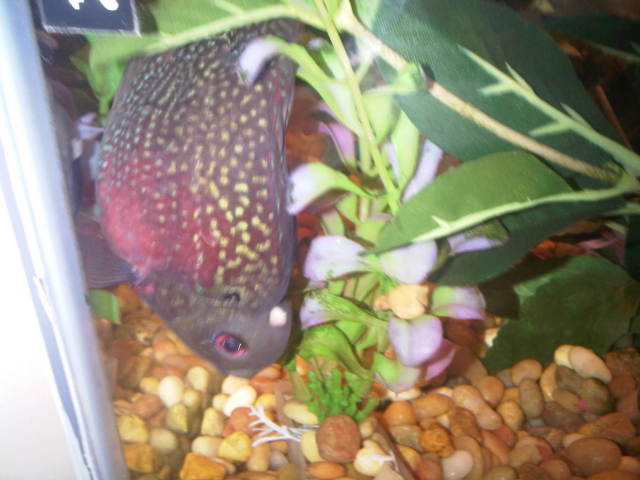 Parrot Fish - White Spot
Question
Fish Spot
Hi Ms. Fields,
I have 3 parro
Parrot Fish - White Spot
Question
Fish Spot
Hi Ms. Fields,
I have 3 parro
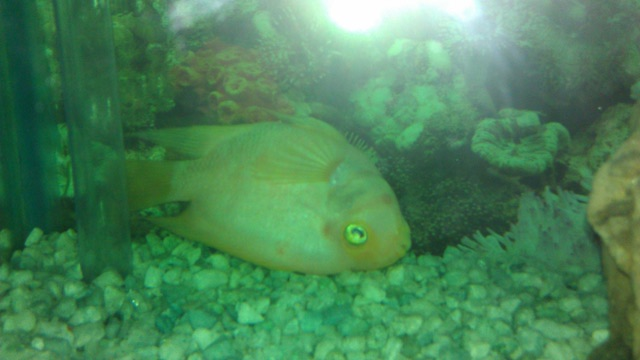 my 3 year old parrot stays upside down in the bottom of the tank.
Question
parrot laying upside d
Hello,
My parro
my 3 year old parrot stays upside down in the bottom of the tank.
Question
parrot laying upside d
Hello,
My parro
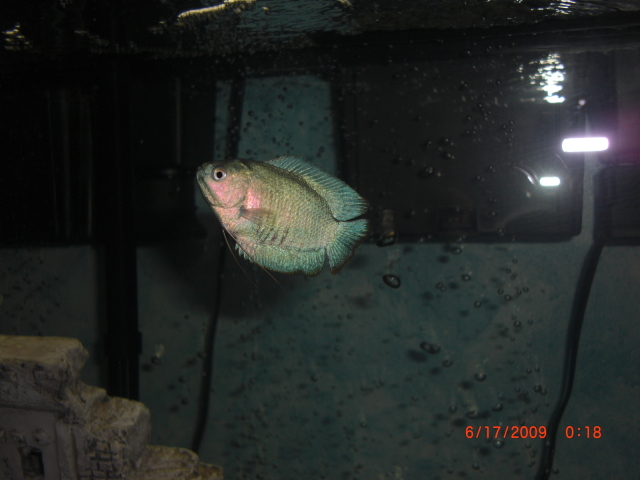 POWDER BLUE DWARF GOURAMI
Question
POWDER BLUE DWARF GOUR
HI. I JUST WANT TO KNOW
POWDER BLUE DWARF GOURAMI
Question
POWDER BLUE DWARF GOUR
HI. I JUST WANT TO KNOW